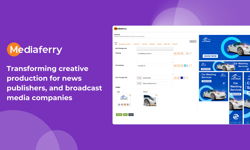
Ignore the naysayers! The outlook for print is positive and profitable. The first step is acknowledging that the market has changed and that print needs to be viewed differently in order to succeed.
In a shrinking magazine market – and it is shrinking – it is key to approach printed products without sentiment and work out how you can make each copy you sell profitable! Do that and there is still much profit to be made.
The good news is that many of the key variables to ensure this are within our control – cover price, pagination, paper grades, handling and the sales efficiency / availability balance in the newstrade, as well as the option to have a one-to-one relationship with the customer via a subscription.
These variables need to be reviewed with profit as a key objective. The common publishing response of not increasing prices due to pagination declines and printing more copies in the hope of selling a few more is simply not sustainable anymore. Quantity of content should not be equated to the price or value, quality of content should and there needs to be more confidence in the perceived value of a magazine.
Excessive availability in the shops is also rarely worth its cost. Be brave – sell higher priced products to potentially fewer people and cut out wastage. There are many case studies in modern publishing where this approach of ‘less is more’ has been proven to succeed.
The metric for success with print needs to change. It is no longer ‘how may copies can we sell’, but ‘how much can I make per copy’.
There is also much evidence to show that traditional price points for magazines, which many publishers were reluctant to breach, are no longer relevant. Magazine publishers have discovered that while, broadly, sales are declining, there are those customers who will pay much more simply because they love the format. This is why we see the proliferation of the £10 plus “bookazines” on newsstands.
Just as cinema, radio and television went through painful reinventions while working out that the “market” desired a more niched delivery of content, so it is currently for magazines. And, just as book sales slumped on launch of the Kindle, so magazines are experiencing similar now. However, book sales have grown for seven years in a row as many customers decided that this was the format they prefer, and publishers responded accordingly.
If magazine publishers take the same approach, then the future of print is secure. However, now more than ever, the old adage that madness is ‘doing the same thing over and over again but expecting a different result’ is true for print.
Be brave – sell higher priced products to potentially fewer people and cut out wastage.
About Warners Group Publications plc
Having been in specialist magazine publishing for over 25 years, we understand publishing. We provide a complete range of publishing services for publishers across all markets. Our services help publishers through all the stages from creation to circulation, offering publisher-orientated third party publishing services.
Email: keironj@warnersgroup.co.uk
Tel: 01778 395043
Mob: 07989 324157
Website: www.warnerspublishing.co.uk
This article is part of our ‘Print Post-Pandemic’ special feature, looking at the future of print as we emerge from lockdown. The feature includes the following articles by leading publishers and suppliers:
A major part of the mix, by Mark Allen
Rewards extended dwell time, by Sally Hampton
Shout it loud: print is safe!, by Chris Horn
Targeted distribution is key, by Stephanie Hyde
New metrics needed, by Keiron Jefferies
Sustainability: consumers demanding more, by Sarah Lesting
We need to change the way we operate, by Nicola Murphy
Reasons for (justifiable) optimism, by Tim Robinson
Luxury is physical, by Piers Russell-Cobb
Positive outlook, by Adam Sherman
Subtle changes bring cost savings, by Julian Townsend
Turning ‘expensive’ into ‘premium’, by Neil Wass
This article was first published in InPublishing magazine. If you would like to be added to the free mailing list, please register here.










